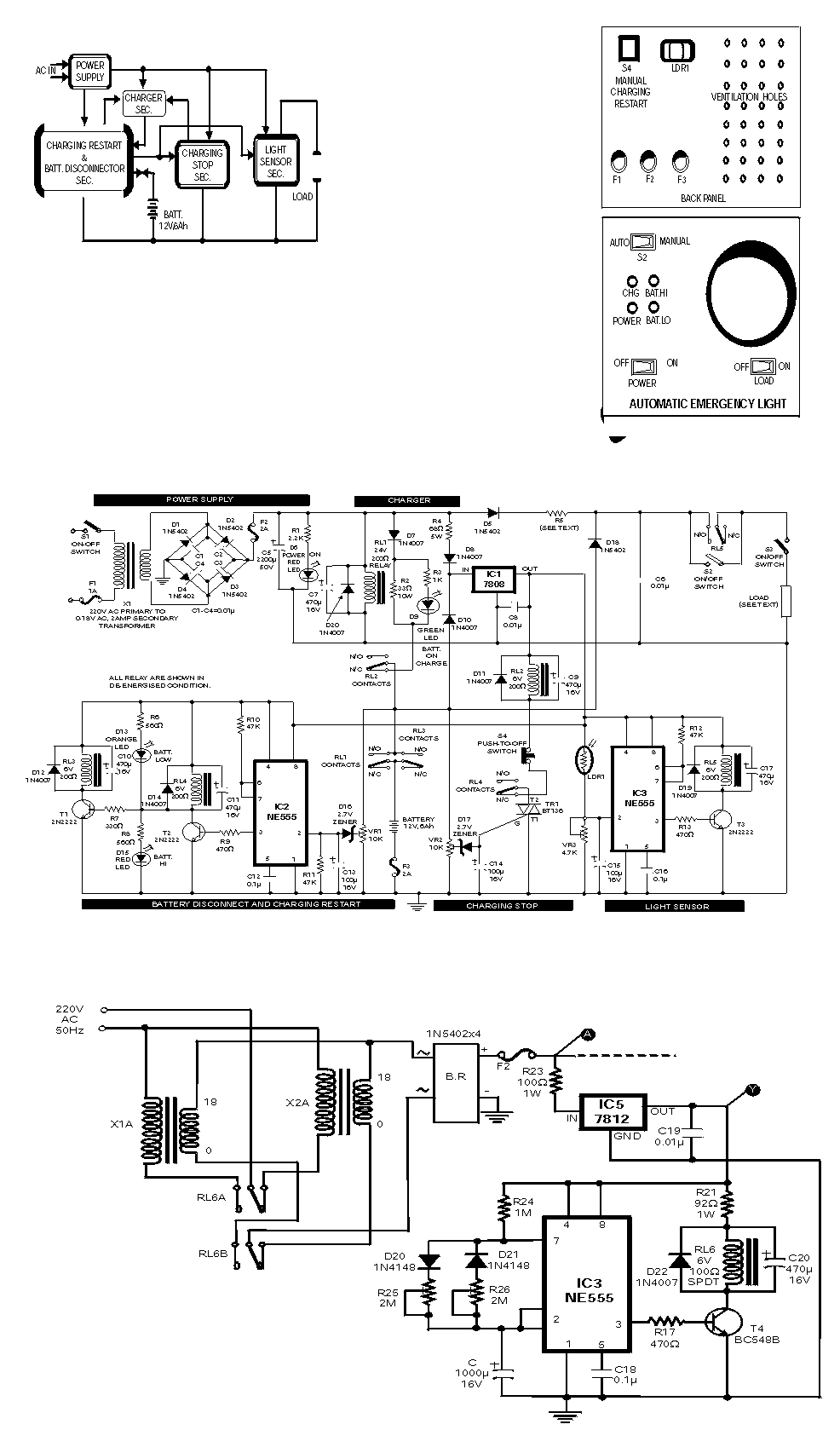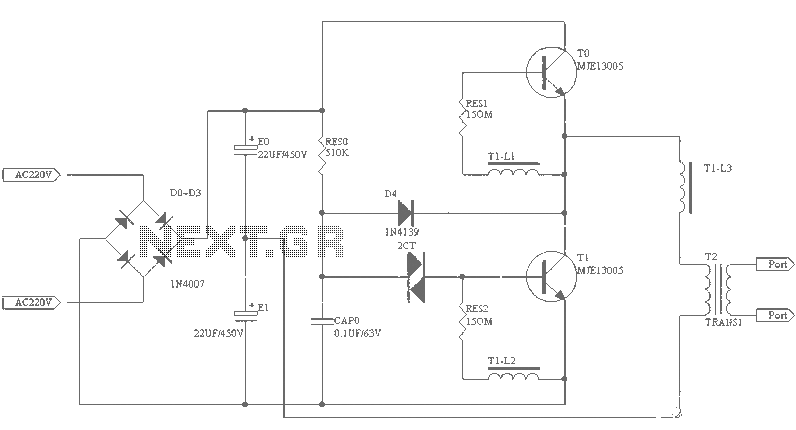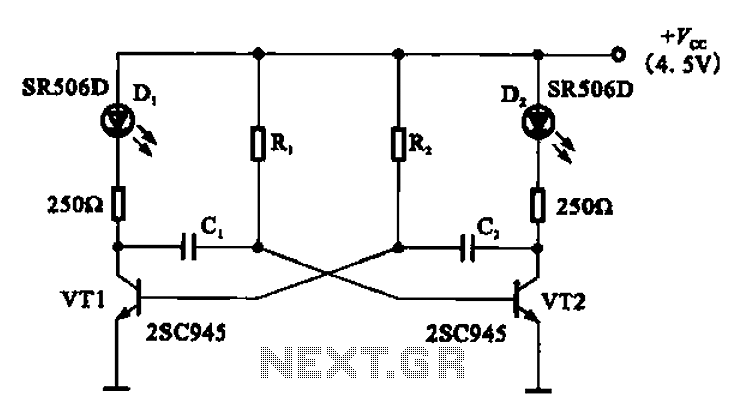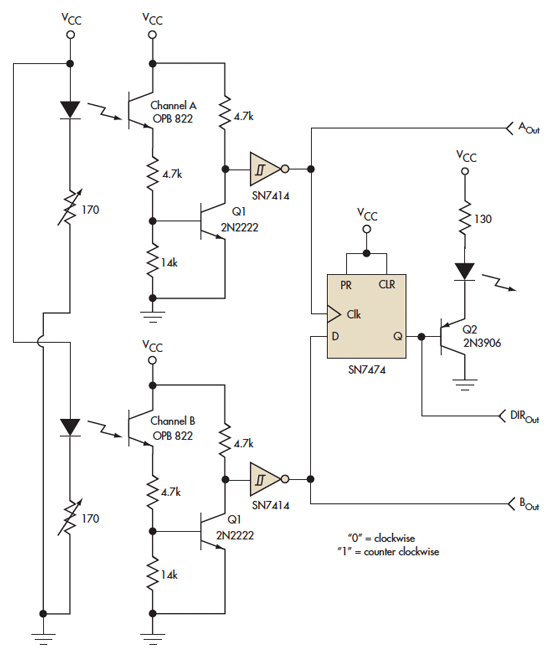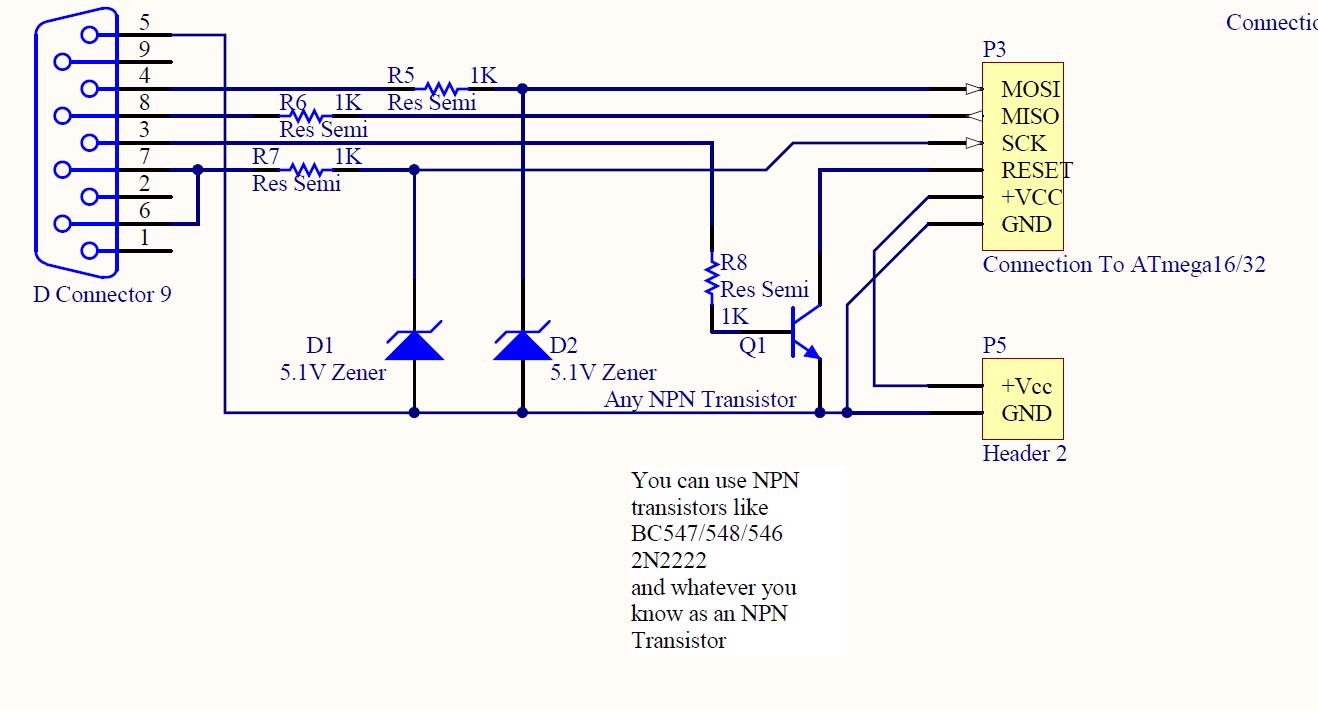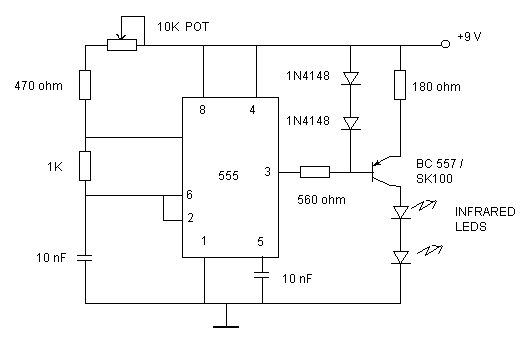
Car Headlight with Delay Circuit
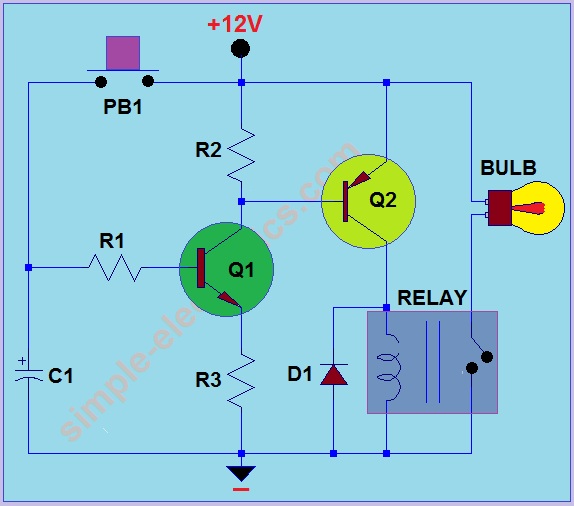
This circuit operates by activating a headlight when the push-button PB1 is pressed. The headlight remains illuminated for a predetermined duration, which can range from several seconds to minutes, before automatically turning off. When PB1 is engaged, capacitor C1 begins to charge, causing transistors Q1 and Q2 to turn on and illuminate the bulb. Once PB1 is released, the charge stored in C1 discharges through resistors R1 and R3, leading to a gradual decrease in voltage across the capacitor. This discharge continues until the voltage falls below a threshold that turns off transistor Q1, resulting in the bulb being switched off. The duration of the illumination can be extended by increasing the capacitance value of C1. This circuit shares similarities with delay switch circuits that utilize transistors for delayed operation.
The circuit consists of a push-button switch (PB1), which serves as the primary control element. Upon pressing the button, the circuit is energized, allowing current to flow and charge the capacitor (C1). The charging of C1 is critical, as it determines the time the headlight remains on. The transistors (Q1 and Q2) are configured in such a way that they amplify the current flowing through the circuit, ensuring that the bulb receives sufficient power to illuminate brightly.
Resistors R1 and R3 play an essential role in controlling the discharge rate of the capacitor. The values of these resistors can be adjusted to modify the time it takes for the capacitor to discharge and subsequently turn off the transistors. The relationship between the capacitance of C1 and the resistance values of R1 and R3 can be described by the time constant formula (τ = R × C), where τ represents the time it takes for the voltage to drop to approximately 37% of its initial value. By selecting appropriate values for R1, R3, and C1, the circuit can be fine-tuned to achieve the desired delay duration.
In practical applications, this circuit can be utilized in automotive lighting systems, providing convenience by allowing headlights to remain on for a short period after exiting the vehicle. It enhances safety by ensuring that the area around the vehicle is illuminated, which can prevent accidents in low-light conditions. Additionally, the simplicity of the design makes it suitable for various other applications where a timed delay is required. The circuit's reliability and efficiency can be further improved by selecting high-quality components and ensuring proper thermal management for the transistors.What this circuit does is when you push thepush-buttonPB1, it will make your headlight turns on for several seconds or minutes then it will turn off. The idea of this is when you push PB1, the capacitor C1 will charge and transistors Q1 and Q2 are on.
During this instant, the bulb is on. When PB1 is open, the charge will drain to the resistors R1 and R3 until the capacitor voltage drops to a certain voltage that will turn off the transistor Q1 (bulb is off). Increasing the value of capacitance increases the duration of the delay. The circuit is very similar to Delay Switch using Transistor and Delay Off Circuit. 🔗 External reference
The circuit consists of a push-button switch (PB1), which serves as the primary control element. Upon pressing the button, the circuit is energized, allowing current to flow and charge the capacitor (C1). The charging of C1 is critical, as it determines the time the headlight remains on. The transistors (Q1 and Q2) are configured in such a way that they amplify the current flowing through the circuit, ensuring that the bulb receives sufficient power to illuminate brightly.
Resistors R1 and R3 play an essential role in controlling the discharge rate of the capacitor. The values of these resistors can be adjusted to modify the time it takes for the capacitor to discharge and subsequently turn off the transistors. The relationship between the capacitance of C1 and the resistance values of R1 and R3 can be described by the time constant formula (τ = R × C), where τ represents the time it takes for the voltage to drop to approximately 37% of its initial value. By selecting appropriate values for R1, R3, and C1, the circuit can be fine-tuned to achieve the desired delay duration.
In practical applications, this circuit can be utilized in automotive lighting systems, providing convenience by allowing headlights to remain on for a short period after exiting the vehicle. It enhances safety by ensuring that the area around the vehicle is illuminated, which can prevent accidents in low-light conditions. Additionally, the simplicity of the design makes it suitable for various other applications where a timed delay is required. The circuit's reliability and efficiency can be further improved by selecting high-quality components and ensuring proper thermal management for the transistors.What this circuit does is when you push thepush-buttonPB1, it will make your headlight turns on for several seconds or minutes then it will turn off. The idea of this is when you push PB1, the capacitor C1 will charge and transistors Q1 and Q2 are on.
During this instant, the bulb is on. When PB1 is open, the charge will drain to the resistors R1 and R3 until the capacitor voltage drops to a certain voltage that will turn off the transistor Q1 (bulb is off). Increasing the value of capacitance increases the duration of the delay. The circuit is very similar to Delay Switch using Transistor and Delay Off Circuit. 🔗 External reference
